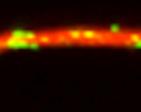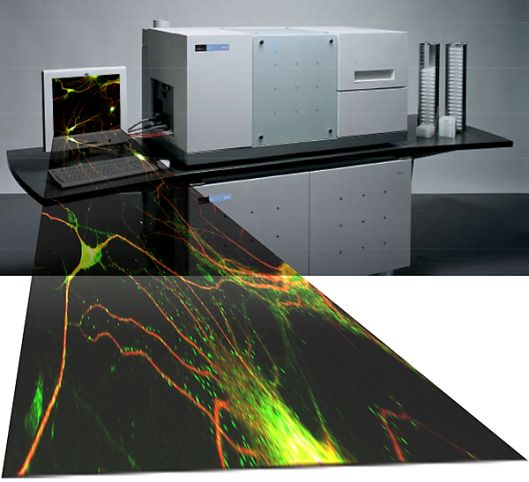
Neuroscience Campus teams led by Ronald van Kesteren, Guus Smit, Huibert Mansvelder and Marloes Groot acquire over one million Euro of support by NWO to innovate photonics and live cell imaging facilities.
Two NWO-Investment subsidies for research on synapses
 Synapses are the most elementary information processing units in the brain. We know for decades already that synapses transmit signals form one nerve cell to another, and that adaptive changes in the strength of synaptic transmission are essential to our cognitive abilities. Yet, surprisingly little is known about the molecules that mediate synaptic change in response to stimulation, or the rules that govern synaptic change in the intact living brain. This is going to change however since NWO has awarded two Medium Investment-grants to the collaborating teams of Systems Biology of the Synapse and the Photonics and Life Cell Imaging group on our campus to develop new imaging techniques for studying synapses in vitro and in vivo.
Synapses are the most elementary information processing units in the brain. We know for decades already that synapses transmit signals form one nerve cell to another, and that adaptive changes in the strength of synaptic transmission are essential to our cognitive abilities. Yet, surprisingly little is known about the molecules that mediate synaptic change in response to stimulation, or the rules that govern synaptic change in the intact living brain. This is going to change however since NWO has awarded two Medium Investment-grants to the collaborating teams of Systems Biology of the Synapse and the Photonics and Life Cell Imaging group on our campus to develop new imaging techniques for studying synapses in vitro and in vivo.
 The team of Ronald van Kesteren and prof. Guus Smit received a grant to invest in automated confocal cellular imaging and screening instrumentation. High-resolution confocal imaging, together with automated image acquisition and advanced online image analysis algorithms will be used for the systematic functional analysis genes and proteins that mediate synapse formation and synaptic plasticity in vitro.
The team of Ronald van Kesteren and prof. Guus Smit received a grant to invest in automated confocal cellular imaging and screening instrumentation. High-resolution confocal imaging, together with automated image acquisition and advanced online image analysis algorithms will be used for the systematic functional analysis genes and proteins that mediate synapse formation and synaptic plasticity in vitro.

Both investments individually contribute to existing cellular imaging and screening facilities within the CNCR. Moreover, they will jointly contribute to new avenues for studying neuronal synapses and significantly advance our understanding of synapse function and synaptic plasticity.
